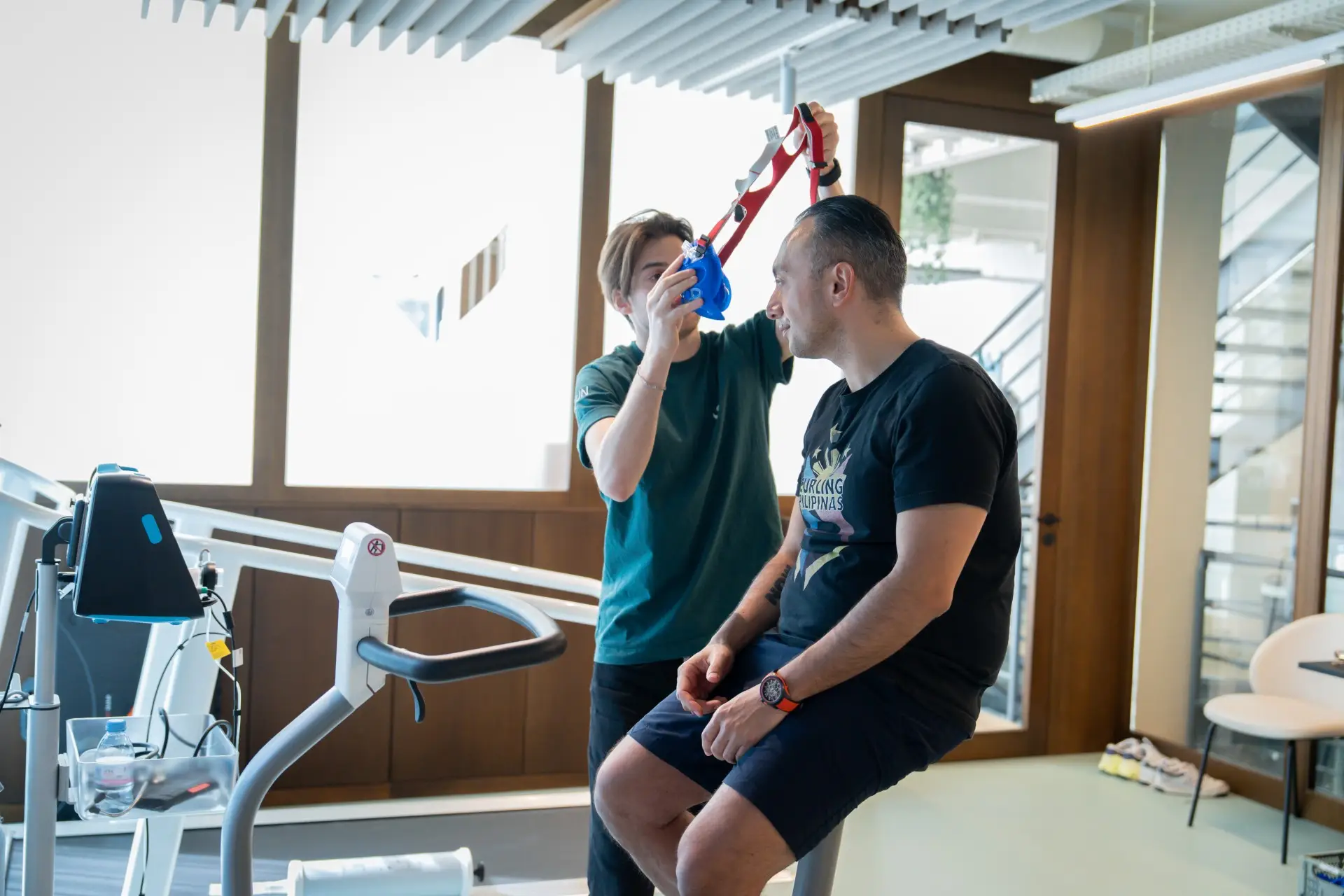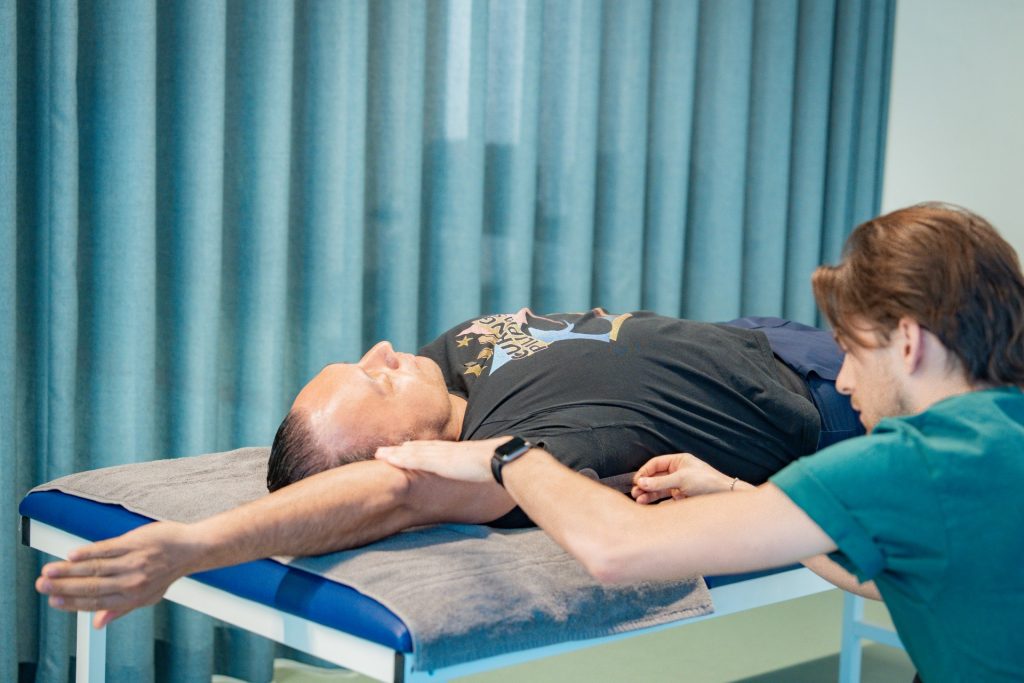Olympic Health Check, Part 2: Results & Implications

The results from Alan Frei's Longevity Check-up are in – and they paint a clear picture. While Alan's baseline health is assessed, specific areas were defined that require targeted improvement if he wants to increase his odds of making it to the 2026 Winter Olympics. Backed by medical diagnostics and genetic insights, Alan now has a personalized health protocol guiding his next steps in training, recovery, supplementation, and lifestyle adjustments.
1. Time to Get Moving – Smarter, Not Longer
Alan's VO2max – a critical marker of cardiorespiratory fitness – came in at 42.8 ml/kg/min. While that's within a normal range, it's not quite sufficient for high-level performance. His short term goal is to exceed a VO2max of 44 ml/kg/min but in the long run 50 is the number to go for.
The strategy: structured endurance training tailored to his current capacity. That includes low- to moderate-intensity sessions aimed at improving mitochondrial efficiency, aerobic capacity, and metabolic flexibility without adding excessive stress. His individual protocol outlines specific training zones and suggested session formats, including ways to track progress and avoid overtraining. A one-off personal training session could also help fine-tune his approach.
2. Mobility – More Than Just Injury Prevention
Our tests showed reduced hip mobility – a potential limiting factor for both athletic performance and long-term joint health. This is especially relevant in curling, where hip flexibility directly influences technique and injury risk.
The good news: improvements are relatively easy to achieve with targeted mobility drills and consistent practice. Alan has been given a hip-focused mobility routine, which should significantly enhance his range of motion. A recheck in 6 months will ensure his progress is on track.

3. Nutrition – A Complex, Therapeutic Tool
Alan's nutrition isn't just about fueling workouts. It needs to actively support his cardiovascular system, reduce inflammation, balance hormones, and stabilize metabolism. His blood lipid profile shows elevated LDL (5.4 mmol/L) and lipoprotein(a) (181 mg/L), while his Omega-3 index of 6.2 is borderline. Combined with genetic factors that affect fatty acid metabolism, this points to the need for a precision-based dietary approach – rich in Omega-3 fatty acids, anti-inflammatory fats, and low in processed oils.
In addition, signs of oxidative stress (increased oxidized glutathione) suggest his body is battling more free radicals than it should. His genetic makeup also limits the efficient recycling of certain antioxidants like vitamin C. A diet high in polyphenols, micronutrient-dense vegetables, and targeted supplements is part of his strategy.
Alan's nutrition protocol also addresses signs of gut microbiome imbalance (low fiber intake, digestive symptoms), and outlines a fiber reintroduction plan, as well as meal structuring, fasting windows, and ways to reduce systemic inflammation through food. For full support, two follow-up consultations with a nutritionist are included in his package.
4. Supplements – Beyond Basics
Based on his lab work and genetic findings, Alan has been prescribed a tailored supplement strategy. Key recommendations include:
His protocol includes sourcing tips for hard-to-find products, like Melatonin (which requires a prescription in Switzerland), as well as detailed timing, dosages, and interaction warnings to ensure safe, effective use – especially as he needs to be very cautious as an athlete (doping).
5. Recovery Routines – Filling in the Gaps
Alan is an entrepreneur, a doer – but also constantly under pressure. The problem: Alan's days are tightly packed, leaving no time for decompression. His morning cortisol of 5.5 nmol/l and his overall rate variability (HRV) score of 49 out of 100 points reflects a high stress profile.
His protocol encourages short, unplugged breaks throughout the day: 10-15 minutes of walking, breathwork (such as Wim Hof-style exercises), or meditation. These micro-recovery windows are essential for nervous system regulation.
His sleep also needs improvement: HRV scores suggest he's not fully recovering at night. That's where sleep hygiene practices come in – cooler temperatures, complete darkness, consistent bedtimes, and limited alcohol. Ashwagandha and Melatonin will assist here, but lifestyle change is the true driver. His protocol includes tracking tools and behavioral strategies to make these improvements stick.
6. The Bigger Picture – Measured Progress, Long-Term Impact
While Alan's results show plenty of room for optimization, they also provide a clear, data-driven path forward. Metrics like HbA1c (at 5.4%) are approaching the prediabetic range, but can likely normalize with improved VO2max, more restorative sleep, and better dietary choices, but they will need follow-up – as outlined in the physician letter he received.
In sum: Alan has everything he needs – from objective health data and attendant expert interpretation to a comprehensive protocol covering fitness, food, recovery, and supplements. Now it's about translating insights into action. The road to the Winter Olympics is still long, but with this level of precision and Alan's commitment, it might just be within reach.

More articles

Red Light Masks: A Small Guide
Red light therapy is getting more and more popular, but not all devices live up to their promises. The truth is, many masks don’t meet the standards needed to be effective and some may even do more harm than good. To help you make an informed choice, we’ve put together a short guide with the most important facts.

Olympic Health Check, Part 2: Results & Implications
The results from Alan Frei’s Longevity Check-up are in – and they paint a clear picture. While Alan’s baseline health is assessed, specific areas were defined that require targeted improvement if he wants to increase his odds of making it to the 2026 Winter Olympics.

Ready for the Olympics? Part 1: Alan Frei’s Longevity Check-up
Alan dreams of participating in the 2026 Winter Olympics. The catch? He has spent far more time in business meetings and office chairs than on running tracks or ice rinks. Can he still make it? A key element on his journey is the comprehensive health check-up he completed at the Longevity walk-in clinic AYUN in Zurich. Read on to discover how Alan had his body thoroughly tested by medical experts.









